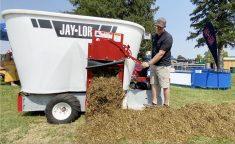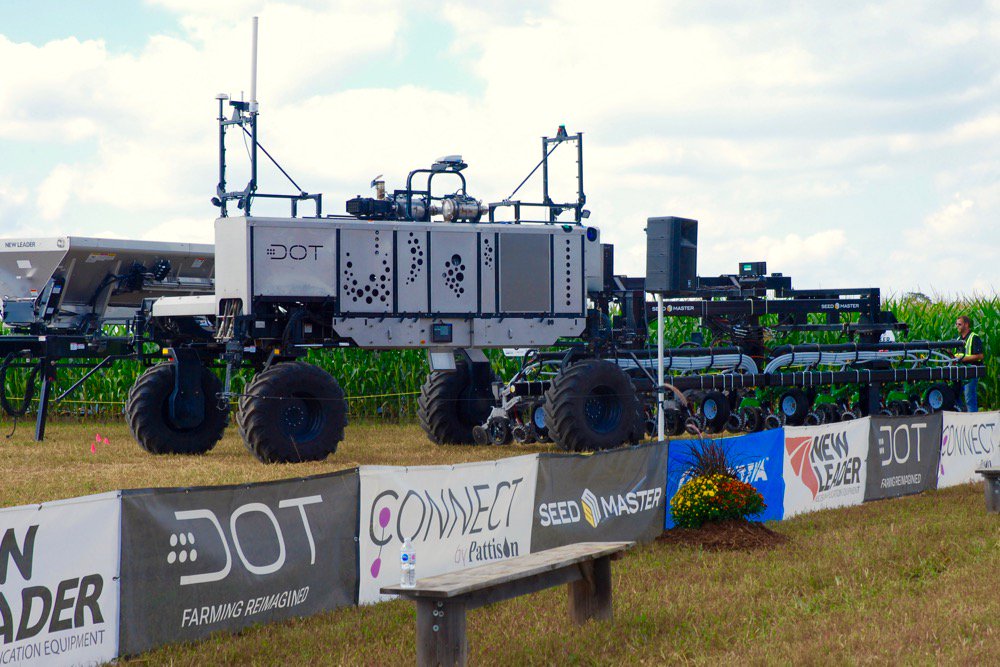When Dr. Jason Deveau talks about sprayer cleanouts, he knows it’s not a happy subject.
During the 2017 edition of Canada’s Outdoor Farm Show at Woodstock, Ont., Deveau, the application technology specialist for the Ontario Ministry of Agriculture, Food and Rural Affairs (OMAFRA) at Simcoe, spoke to farmers about a new continuous-rinse system.
In some European jurisdictions, farmers have lost the freedom to do sprayer cleanouts at their own discretion. With point source contamination threatening ground water sources, some governments have responded to the detection of farm chemicals, so legislation was enacted dictating that farmers must perform a cleanout before they leave a field.
Read Also

Dryness poised to threaten Saskatchewan crops
Crops in Saskatchewan are developing in opposite directions, the province’s latest crop report said. Growing conditions in the province vary, with some areas receiving enough rain while other locations are experiencing crop stress due to hot, dry conditions.
“They weren’t allowed to leave until their sprayer held one or two per cent of the original tank concentration as sampled at the nozzle,” said Deveau. “Recognizing that a conventional triple rinse can take 20 or 30 minutes, that adds a lot of time to somebody’s day when they have to be clean coming out of every single field.”
In Europe, engineers realized sprayers typically have one pump to either spray from the boom, circulate spray or draw water from a clean water tank. Unfortunately, they can’t do all of those at the same time.
In a triple-rinse scenario, there can be five to 15 gallons of spray mix left in the lines, or the sump pump, or in the tank.
“If you introduce one-third of the clean water you’re carrying using the main pump through the rinse-down nozzle, you get slightly less dirty water, and that’s a dilution,” Deveau said. “Then you circulate that through the system as best you can, climb back into the cab and spray it out the boom. But again, you’ve left five, 10 or 15 gallons of now more-dilute spray behind.”
That step is repeated twice, with the remaining solution becoming more dilute each time. But has enough water been added to reach that one or two per cent?
European engineers found that using smaller amounts, rinsed through the system repeatedly, is more effective. To help, they added a dedicated low-volume pump for the water, creating a continuous-rinse system.
“It draws clean water from the tank and introduces it to the rinse-down nozzles directly, bypassing the plumbing and the main pump,” Deveau said. “The main pump can then be used to continually spray, and when it’s empty, you flip a switch in the cab and clean water displaces the dirty water rather than dilutes it.”
The good news is that it will drop that concentration down to that one or two per cent level, and do it in a fraction of the time — from 30 minutes for a triple-rinse, down to 10.
“Best of all, you never left the cab, so operator exposure is nil, and you’ve sprayed that rinsate out over the field where it can break down naturally down rather than having point source contamination.”
Deveau worked with HJV Equipment to adapt the system to a Rogator, which cost roughly $1,500. More recently, he worked with Green Lea Fertilizer and Application Equipment to install a similar system on a Case IH Patriot 4440 for about $2,000-$2,500.
That may sound like a lot of money, but considering the time savings, it pays for itself fairly quickly.
— Ralph Pearce is a field editor for Country Guide at St. Marys, Ont. Follow him at @arpee_AG on Twitter.

















